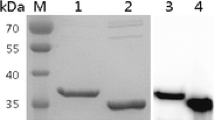Abstract
The present study describes a transmission electron microscopical investigation of trophozoites from Giardia lamblia clone GS/M-83-H7 after exposure to monoclonal antibody (MAb) G10/4. From previous studies it is known that this antibody immunoreacts with the parasite’s major surface antigen VSP (variable surface protein) and exhibits a complement-independent cytotoxic effect on trophozoites of clone GS/M-83-H7. Our investigations revealed that cytotoxicity of MAb G10/4 is associated with shedding of VSP-containing membrane vesicles from the parasite surface and a concomitant partial disruption of the cellular membrane. These morphological alterations depend on the cross-linking capacity of the antibody because the immunoreactivity of respective monovalent F(ab)´ has no significant influence on the cell-surface structure. These findings indicate that the membrane-disintegrative activity of MAb G10/4 may be responsible for the parasitocidal function of the antibody.
Similar content being viewed by others
Author information
Authors and Affiliations
Additional information
Received: 25 May 1995 / Accepted: 29 August 1995
Rights and permissions
About this article
Cite this article
Hemphill, A., Stäger, S., Gottstein, B. et al. Electron microscopical investigation of surface alterations on Giardia lamblia trophozoites after exposure to a cytotoxic monoclonal antibody. Parasitol Res 82, 206–210 (1996). https://doi.org/10.1007/s004360050096
Issue Date:
DOI: https://doi.org/10.1007/s004360050096




